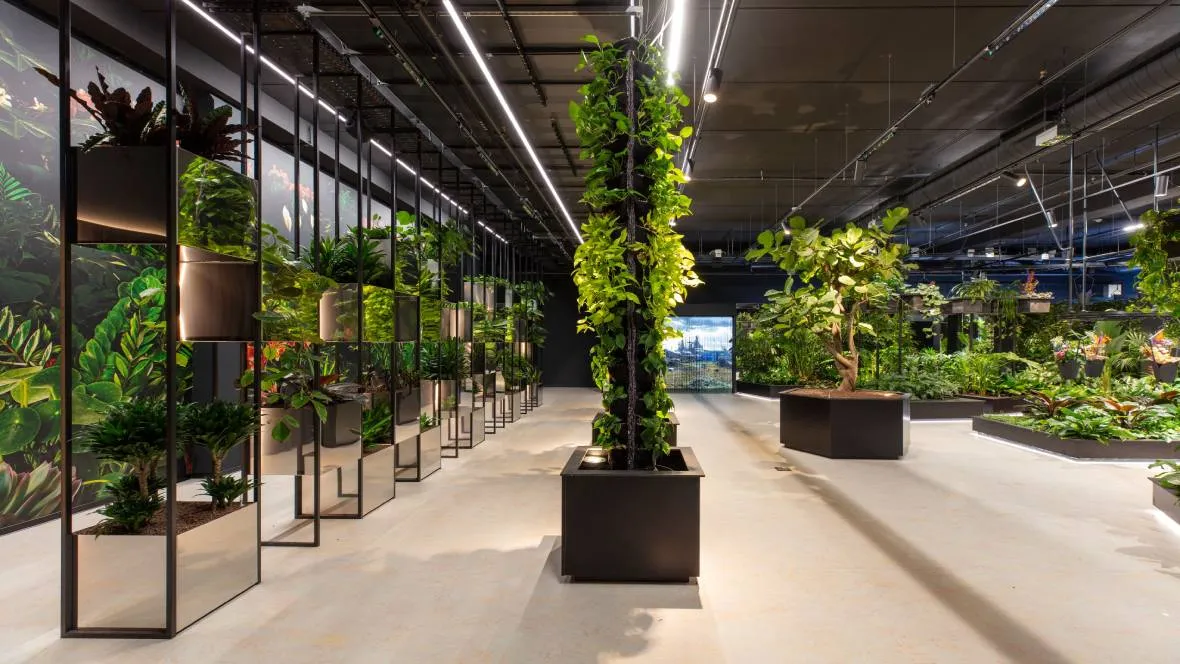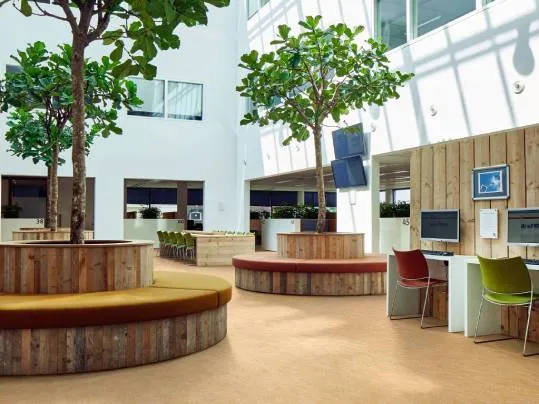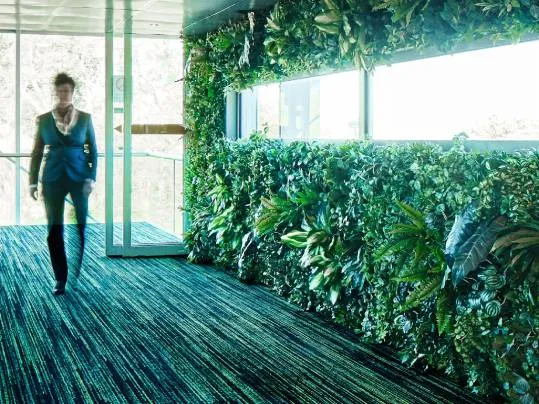As well as the addition of indoor plants and greenery to a space, architectonic features and even flooring, fittings and design accessories can all play on this biophilic notion. The use of natural materials such as wood, access to ample natural light and views out onto gardens all help create a sense of being at one with nature and the wider world.
Where circumstances do not obviously lend themselves to the inclusion of natural features, designers are challenged to think creatively, outside of the box, for solutions: A rigorous cleaning regime, for example, may limit materials choices, or an inner-city location may exclude the possibility for green views. Although arguably not the same as a window with direct views of meadows, carefully curated art depicting natural scenery can still evoke a similar sense of calm. Just as wood-effect flooring can closely mimic the real thing.




